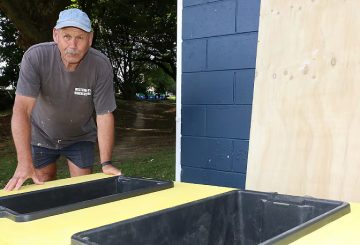斯图·威洛比因热爱吹奏风笛而闻名。他经常会在 L.G.Lawrie 的风笛上播放 “Amazing Grace” 或 “Scotland the Brave” 之类的歌曲。他的妻子瓦尔记得他在走廊里上下游行,吹着风笛。他的音乐声将充斥在他们的房子里,回荡在切里伍德岭沿线提里努伊山脊路的整个社区。
斯图去年11月去世了。在榆树教堂庆祝他的生平时,他的风笛放在棺材旁边。斯图的朋友兰斯·托灵顿在服役期间用斯图的风笛演奏了《我的家》。这首歌是一首悲伤的歌曲,象征着一个真正的苏格兰人的精神,无论他们死在哪里,他们都会回到家中。
Stu的风笛已有100多年的历史,状况良好。它们由乌木(一种漆黑的硬木)制成,带有来自合法收获象牙时代的象牙套圈。护法师用错综复杂的银色雕刻装饰。风笛现在以斯图的名字命名为 “斯图尔特·派普斯”,具有历史和情感价值。计划在新的陶朗加博物馆展出它们,并在澳新军团纪念日等特殊场合播放。
“Stewart Pipes” 的故事始于斯图的父亲 Stanley “Mick” Willoughby,他是 1928 年的全黑选手。米克请他在苏格兰的安娜贝拉·斯图尔特阿姨购买一套风笛作为遗产的象征。这些风笛最终变成了斯图的。
斯图死后,陶朗加市管乐队的管乐大师兰斯·托灵顿对风笛进行了翻新。斯图去世前有机会最后一次听到翻新的风笛声。兰斯在 Stu 的疗养院 Bethlehem Views 演奏了 “Skye Boat Song”。
斯图是陶朗加备受喜爱的人物,他以对音乐、体育和家庭的热爱而闻名。他的风笛继续证明了他的生活和对苏格兰传统的热爱。






























































